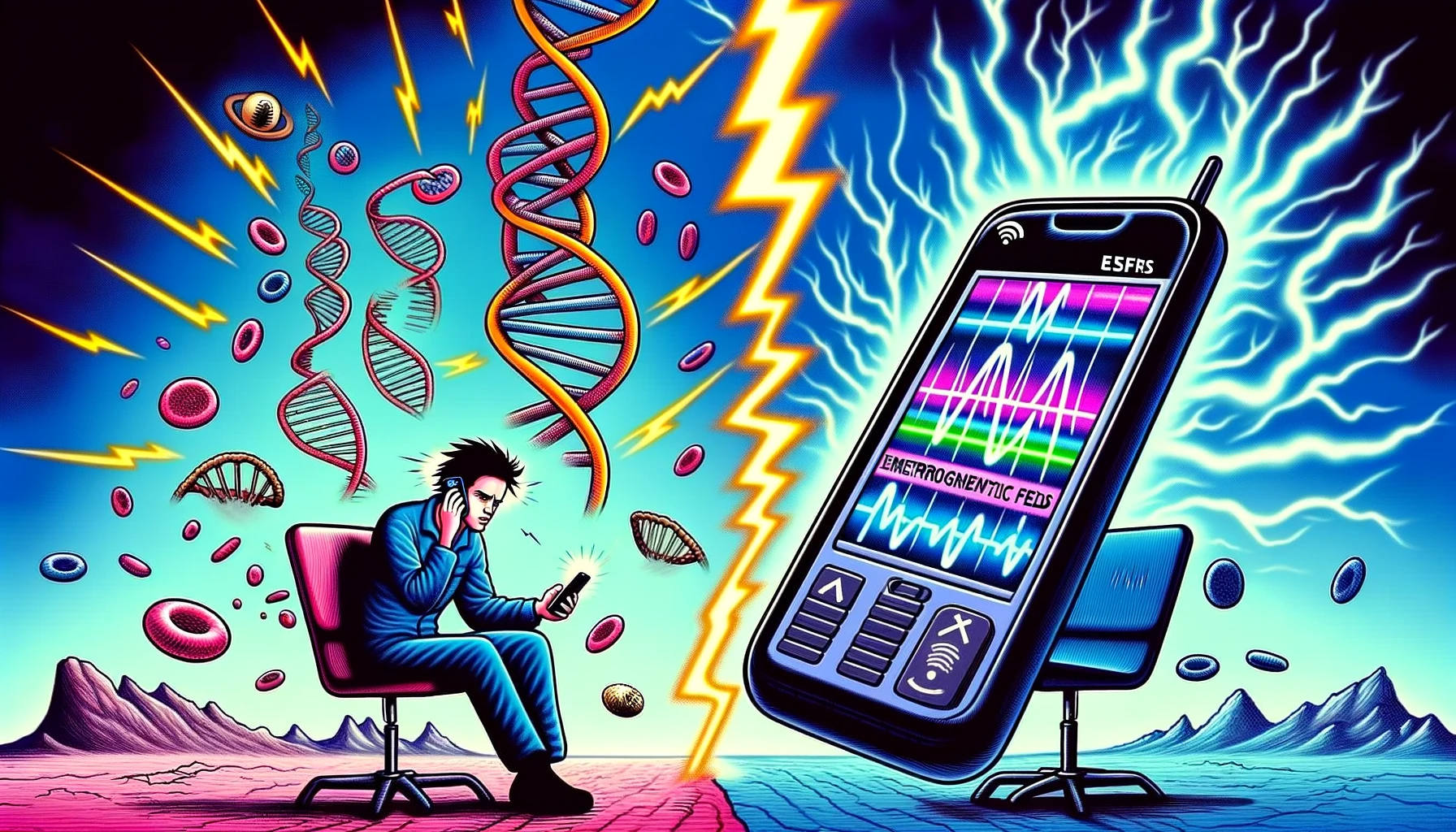Executive Summary
https://www.sciencedirect.com/science/article/abs/pii/S1383574218300991
This report delves into the comparative analysis of DNA damage induced by various types of man-made electromagnetic fields (EMFs), with a particular focus on Mobile Telephony (MT) emissions, as discussed in the study by Dimitris J. Panagopoulos and his research team. The study employs the oogenesis of Drosophila melanogaster as a biological model to assess DNA fragmentation caused by six different EMFs under identical conditions, highlighting the distinct impact of real mobile telephony EMFs compared to other electromagnetic exposures.
Background
The proliferation of electronic devices and the ubiquity of mobile telephony have raised concerns about the potential health risks associated with exposure to electromagnetic fields (EMFs). This study provides a critical comparison of the effects of various man-made EMFs on biological systems, specifically focusing on DNA damage, which is a primary concern due to its link to cancer, neurodegenerative diseases, and reproductive declines.
Methodology
The research compared DNA fragmentation in Drosophila melanogaster’s ovarian cells exposed to six different EMFs:
- GSM 900 mobile phone radiation
- GSM 1800 mobile phone radiation
- 50 Hz alternating magnetic field (MF) at 1 Gauss (G)
- 50 Hz MF at 11 G
- 50 Hz MF at 21 G
- Pulsed electric field (PEF) at 400 kV/m
The study was designed to ensure identical conditions and procedures across all EMF exposures, utilizing the TUNEL assay to measure DNA fragmentation.
Findings
The study’s findings reveal that:
- Mobile Telephony (MT) EMFs (GSM 900 and GSM 1800) induced significantly more DNA fragmentation in Drosophila’s ovarian cells compared to other tested EMFs.
- The bioactivity of MT EMFs was notably higher even with much shorter exposure durations than those of the other EMFs.
- The extreme variability of the polarized MT signals, mainly due to unpredictable intensity changes, was identified as a crucial parameter for their intense bioactivity.
Discussion
These results underscore the unique risks posed by mobile telephony EMFs in comparison to other types of man-made electromagnetic exposures. The study’s direct comparison approach provides valuable insights into the relative bioactivity of different EMFs, emphasizing the need for further research and potentially revised safety standards that account for the unique characteristics of mobile telephony emissions.
Conclusion
The comparative study conducted by Panagopoulos and his team presents compelling evidence of the heightened bioactivity and DNA-damaging potential of real mobile telephony EMFs over other types of man-made electromagnetic fields. Given the widespread use of mobile phones and the potential for long-term health impacts, these findings highlight the importance of continued research and the development of protective measures to mitigate the risks associated with EMF exposure.
Recommendations
- Further research is needed to explore the mechanisms behind the high bioactivity of mobile telephony EMFs and to assess their long-term health impacts.
- Public health guidelines should consider the unique properties of mobile telephony emissions when setting exposure limits.
- The development of mobile telephony technologies should aim to minimize the emission of highly variable, bioactive EMFs.
- Individuals should be educated about the potential risks of mobile phone use and encouraged to adopt safer usage practices.








